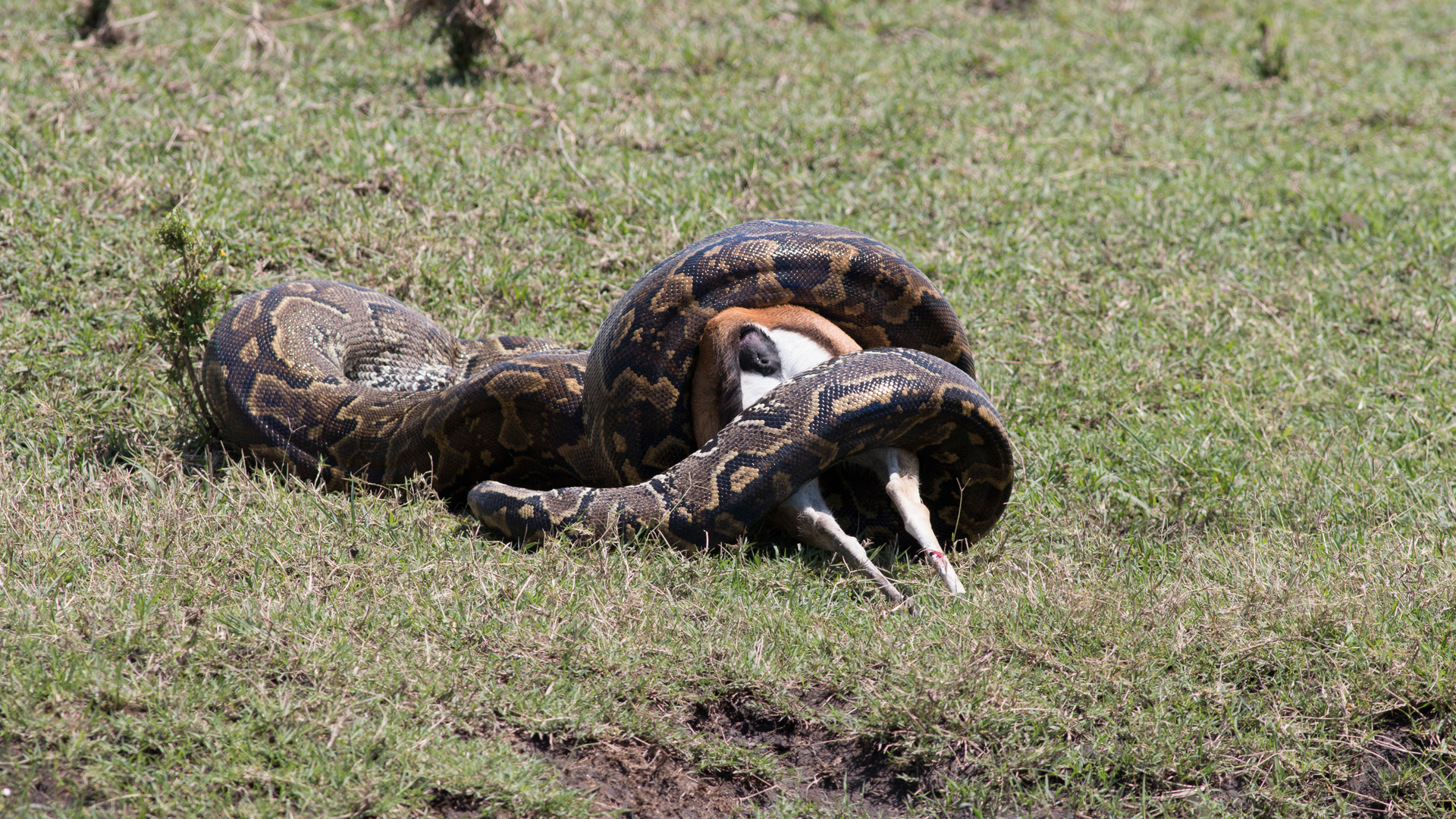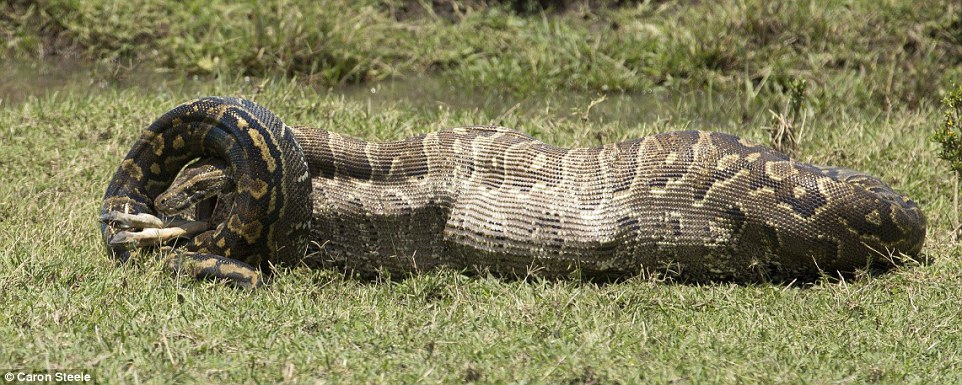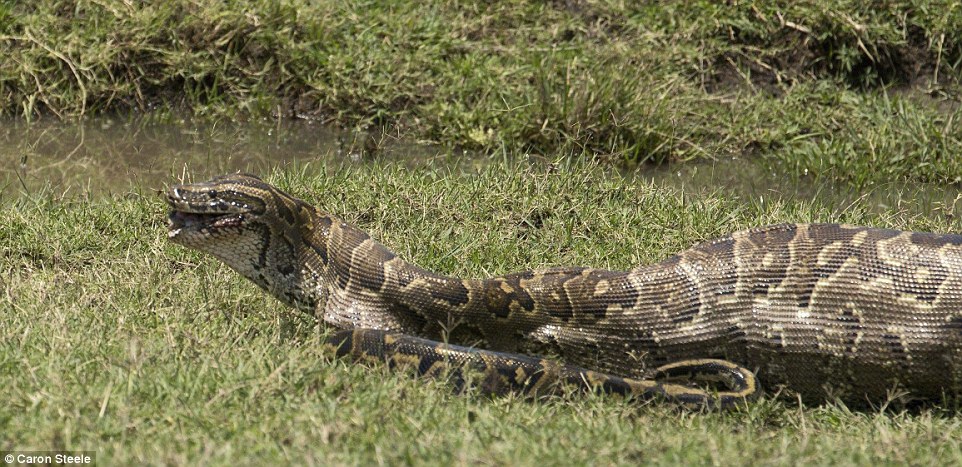A group of astonished tourists on a safari in Kenya were treated to a rare and jaw-dropping sight when they came across a massive 15-foot python devouring an antelope in one impressive gulp.

The remarkable incident unfolded during a game drive in the renowned Masai Mara reserve, known for its frequent sightings of majestic big cats such as lions, leopards, and cheetahs, but rarely snakes. The mesmerizing footage captured the enormous snake leisurely consuming the antelope, starting with its limbs, before lazily retreating towards a nearby stream.

As the snake indulged in its meal, its body swelled to several times its normal size, with its tail coiled around the yet-to-be-eaten portion of the prey. The video also features a local guide explaining the python’s remarkable ability to produce a substance that softens the animal, facilitating the digestion process.

Holidaymakers Caron and Mark Steele from Worcestershire had the privilege of recording this awe-inspiring encounter during their trip in October. They were traveling with Natural World Safaris, a specialized company offering bespoke wildlife holidays that bring guests up close and personal with some of the world’s most elusive creatures, all while supporting local conservation initiatives. It was their guide, Andrew Lenkume, who spotted the captivating scene and drew their attention to it.

Caron shared her interpretation of the events, suggesting that the gazelle may have approached the water to drink when the python lunged out and seized its head in its formidable jaws. She added that with its teeth firmly gripping its prey, the snake likely pulled itself out of the water as the gazelle attempted to escape. Subsequently, the python would have wrapped its powerful body around the hapless antelope, constricting it until life faded away.

The Rock Python, Africa’s largest snake, is rarely encountered on game drives due to its exceptional ability to blend into the surrounding grasses. These slow-moving reptiles typically feed on smaller tree-dwelling animals like squirrels, or occasionally drop from trees onto larger prey, rather than actively stalking and pursuing them.
Most antelopes give birth during September and October, coinciding with the rainy season to enhance the survival chances of their offspring. However, these young ones are often left unattended by their mothers for several hours, making them vulnerable to predators such as hyenas and big cats.
Will Bolsover, the managing director of Natural World Safaris, expressed his awe at the unpredictability of nature, stating that witnessing such an event is a truly once-in-a-lifetime experience. Caron and Mark had the privilege of staying at Richard’s Camp, a nearby luxury site located within a secluded and wild private conservancy.
Encounters like these serve as powerful reminders of the extraordinary and captivating wonders that nature has to offer, showcasing the intricate interplay between predator and prey in the circle of life.